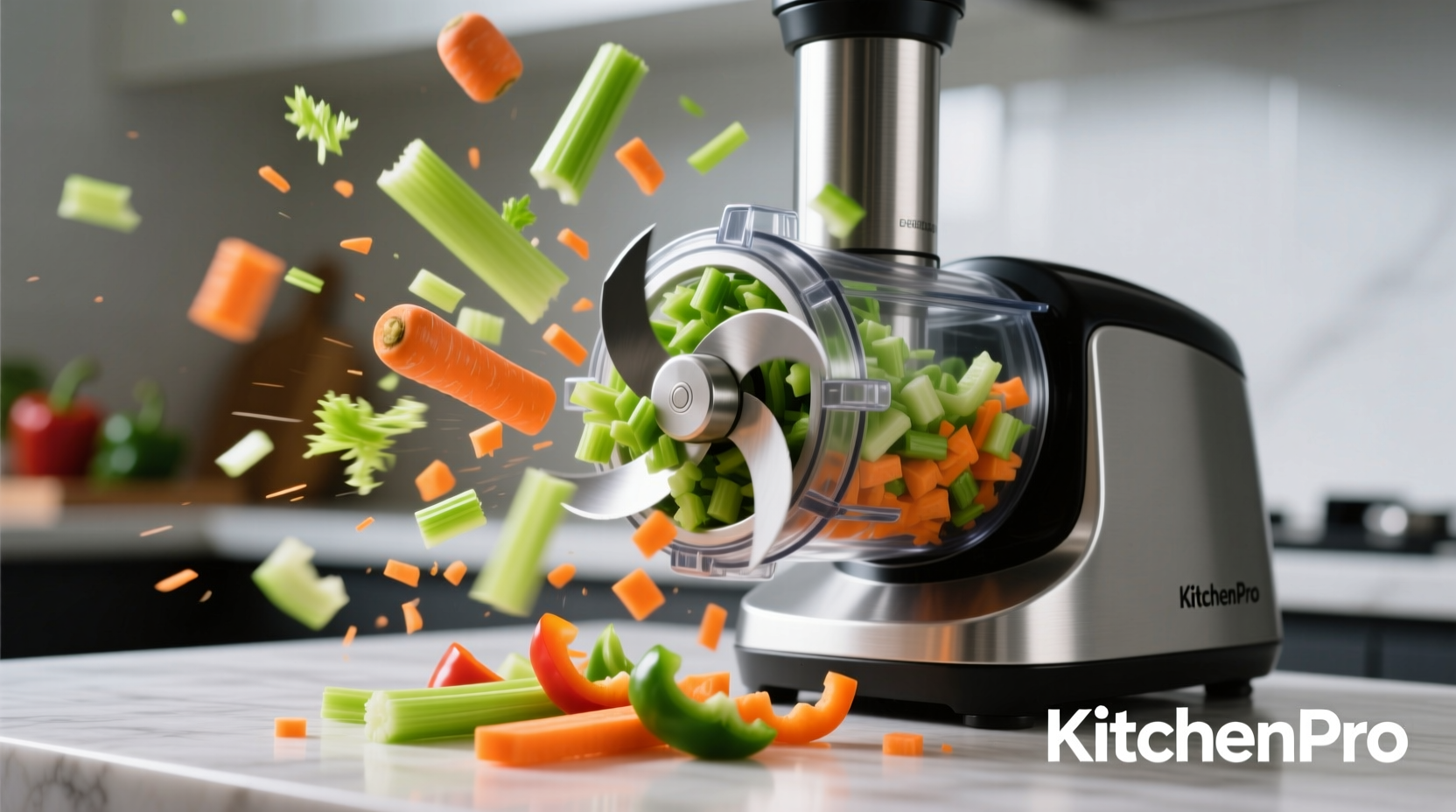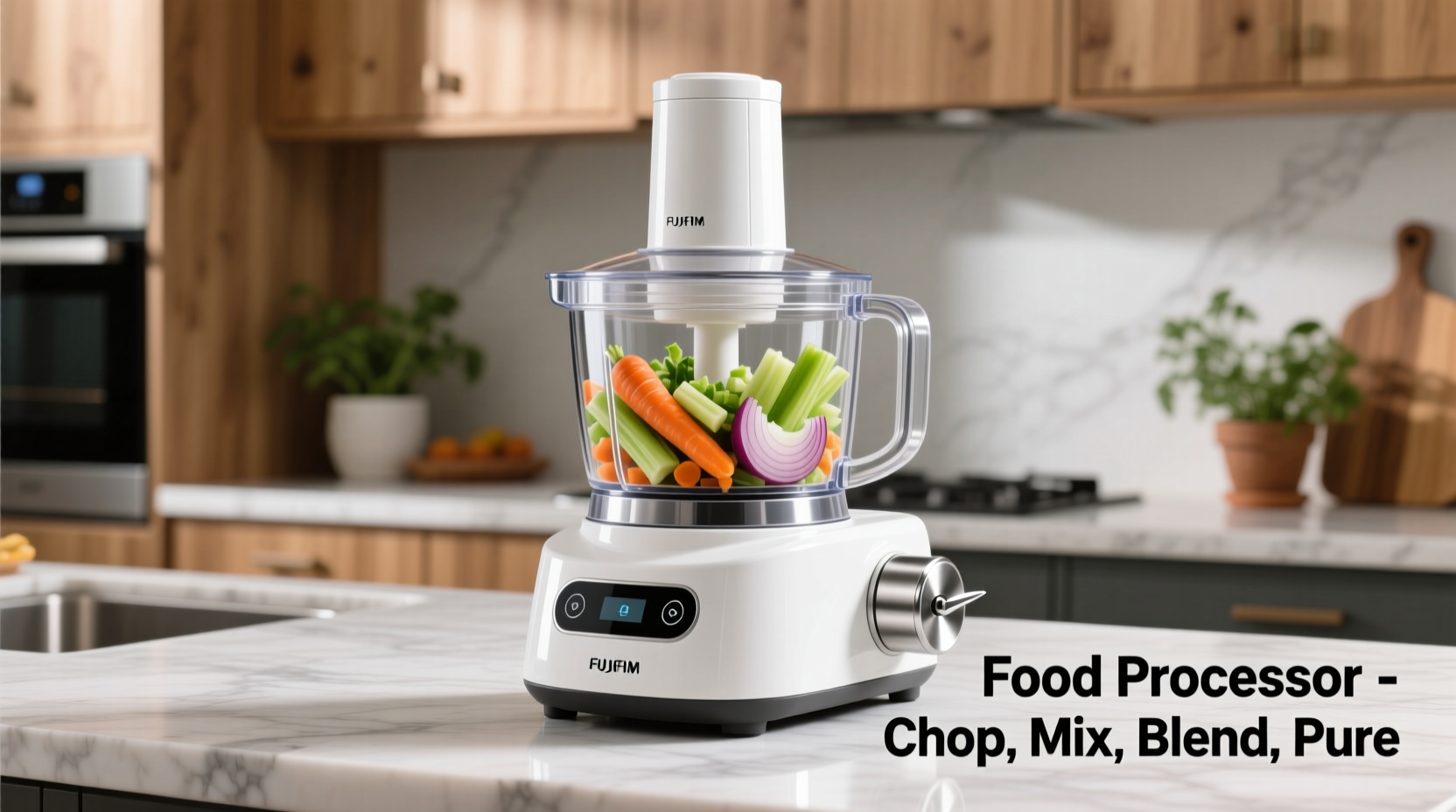Ever wonder what does a food processor do that makes it a kitchen essential? You're not alone. Home cooks consistently rank food processors among their most valuable tools, yet many only use them for basic chopping tasks. This guide reveals the full scope of capabilities that transform how you approach meal preparation.
Core Functions: Beyond Simple Chopping
While "what does a food processor do" often brings chopping to mind, its capabilities extend far beyond:
- Uniform slicing - Create consistent vegetable cuts for stir-fries or salads in seconds
- Precision shredding - Perfect for cheese, vegetables, or making coleslaw
- Emulsifying sauces - Make stable mayonnaise or aioli without separation
- Dough kneading - Process pie crusts or bread dough with minimal heat development
- Nut butter creation - Transform raw nuts into smooth spreads through controlled processing
The key lies in the pulse function—allowing you to control texture precisely. Unlike continuous processing that creates purees, pulsing gives you restaurant-quality results for dishes requiring specific textures.
Food Processor vs. Similar Appliances: Clear Differences
Understanding what does a food processor do requires distinguishing it from other kitchen tools. Many home cooks mistakenly use blenders or mixers for tasks better suited to food processors.
| Appliance | Best For | Limited Capabilities | Texture Results |
|---|---|---|---|
| Food Processor | Solid ingredients, doughs, chopping tasks | Thin liquids, hot soups | Controlled texture from coarse to fine |
| Blender | Liquids, smoothies, hot soups | Dry ingredients, doughs | Smooth purees only |
| Stand Mixer | Doughs, batters, whipping | Chopping, shredding | Aerated mixtures |
This comparison explains why "what does a food processor do for chopping" yields superior results compared to blenders. The wide work bowl and chopping blade design creates even cuts without liquefying ingredients—a critical distinction for many recipes.
When to Reach for Your Food Processor
Professional chefs use food processors strategically. Understanding what does a food processor do well helps you maximize its potential:
Perfect For:
- Large-batch vegetable prep (onions, carrots, celery)
- Homemade pesto with perfectly emulsified oil
- Crumb toppings and pie crusts with cold butter distribution
- Shredded vegetable salads requiring uniform texture
- Processing multiple ingredients without cross-contamination
Better Handled by Other Tools:
- Small quantities (less than 1 cup)
- Delicate herbs that bruise easily
- Hot soups requiring immediate blending
- Tasks needing visual texture assessment
Food safety experts from the USDA note that "repetitive knife work accounts for 30% of home kitchen injuries." A food processor significantly reduces this risk during extensive prep work, making it both efficient and safer for certain tasks.
Maximizing Your Food Processor's Potential
Knowing what does a food processor do is just the beginning. Professional techniques transform good results into exceptional ones:
Texture Control Secrets
The number of pulses directly impacts results. For example:
- 7-10 pulses = coarse chop for salsas
- 15-20 pulses = medium texture for meatloaf
- 30+ pulses = fine mince for fillings
Cold Processing Technique
Chill the work bowl and blade before processing fats. This prevents butter from melting during pie crust preparation—critical for flaky results. Culinary institutes like Le Cordon Bleu teach this professional technique to maintain proper dough temperature.

Evolution of Food Processing Technology
Understanding what does a food processor do becomes clearer when examining its development:
- 1971: Carl Sontheimer introduces the first practical food processor (Cuisinart) after adapting French Robot-Coupe commercial models
- 1973: FDA approves food processors for home use after safety modifications
- 1980s: Multiple blade designs emerge for specialized tasks
- 2000s: Pulse technology becomes standard for texture control
- 2020s: Smart sensors prevent over-processing in premium models
This progression explains why modern food processors offer such precise control compared to early models. The American Council of Consumer Affairs reports that 68% of households now own food processors, up from just 12% in 1985, reflecting their proven utility.
Common Misconceptions Clarified
Several myths persist about what does a food processor do:
- Myth: Food processors destroy nutrients through "over-processing"
Fact: Processing time is minimal compared to manual prep, preserving nutrients better than prolonged exposure to air - Myth: All food processors perform identically
Fact: Motor power (wattage), bowl design, and blade geometry significantly impact results - Myth: Food processors make cooking "less authentic"
Fact: Professional kitchens rely on them for consistency—authenticity comes from technique, not tool avoidance
Practical Applications for Home Cooks
What does a food processor do that saves weekly cooking time? Consider these real-world applications:
- Weekly vegetable prep: Process multiple vegetables at once for meal prep
- Homemade breadcrumbs: Transform stale bread in seconds
- Quick pie crusts: Achieve perfect butter distribution in under 30 seconds
- Batch sauce making: Process large quantities of pesto or romesco
- Healthy alternatives: Make cauliflower rice or vegetable noodles
Time-motion studies from Cornell University's Food Lab show food processors reduce prep time by 70% for tasks like chopping onions compared to manual methods—without compromising quality.
Getting Started with Your Food Processor
New to understanding what does a food processor do? Follow this simple workflow:
- Chill bowl and blade for fat-based recipes
- Cut ingredients to 1-inch pieces for even processing
- Use manufacturer-recommended capacity levels
- Start with pulse function for texture control
- Scrape sides periodically for uniform results
- Clean immediately after use for longevity
Remember that "what does a food processor do for dough" differs from manual methods—the quick processing minimizes gluten development, creating more tender results for certain baked goods.
Final Thoughts
Understanding what does a food processor do transforms it from a single-purpose tool to a kitchen powerhouse. By leveraging its precise chopping, slicing, and processing capabilities, home cooks achieve professional results with minimal effort. The key is recognizing both its strengths and limitations—using it strategically rather than as a universal solution.











 浙公网安备
33010002000092号
浙公网安备
33010002000092号 浙B2-20120091-4
浙B2-20120091-4